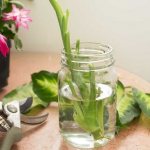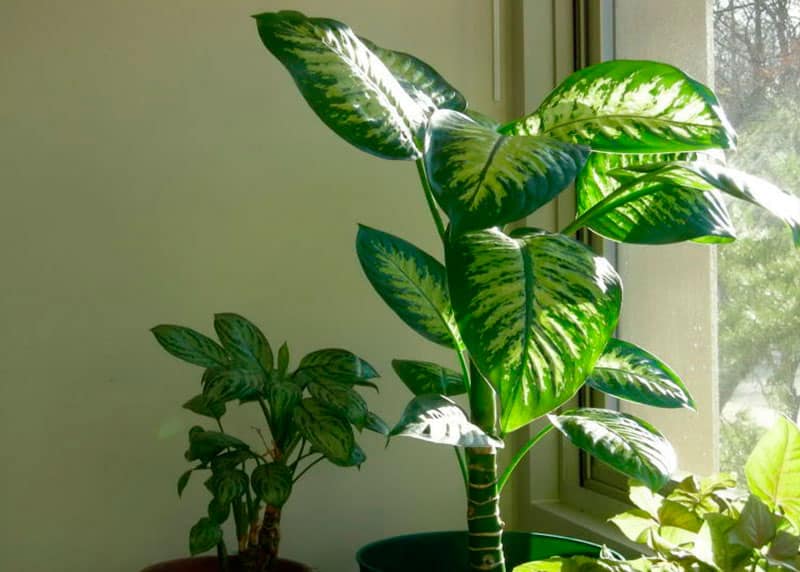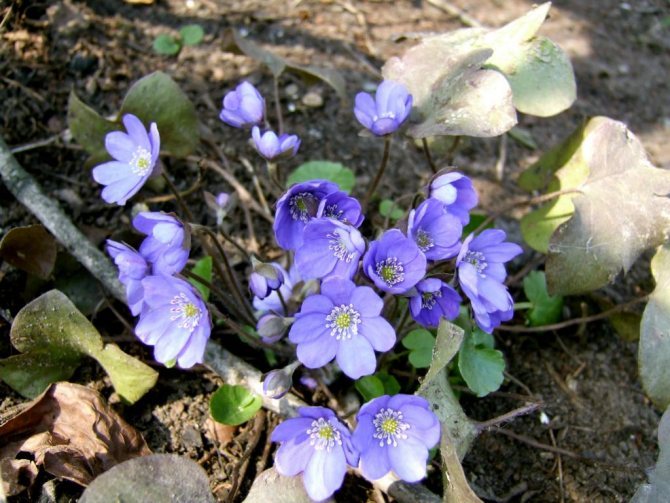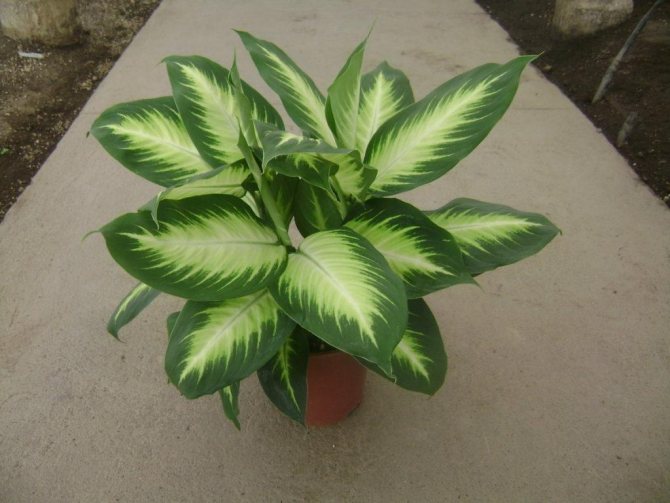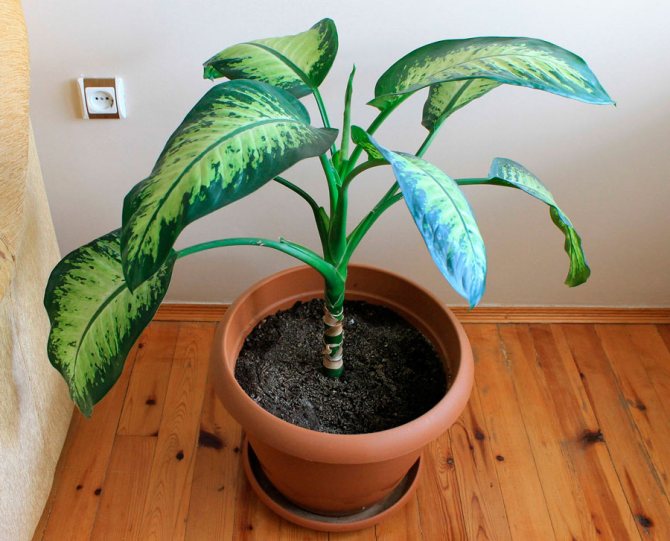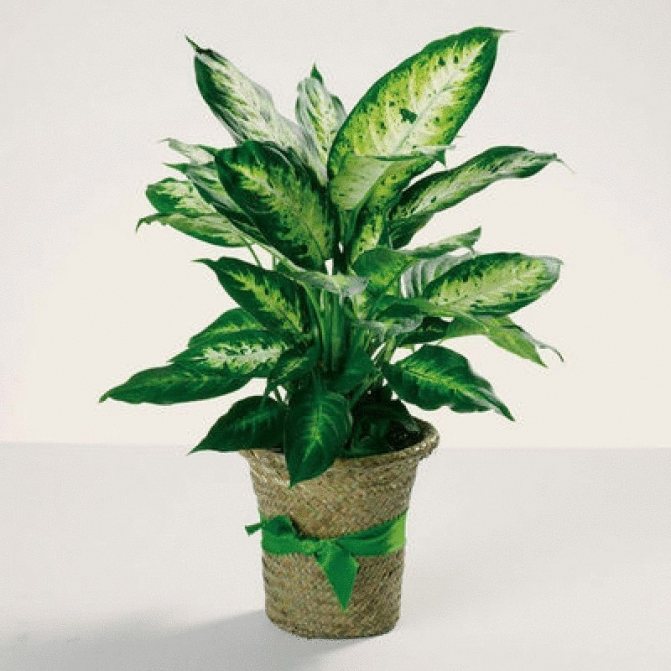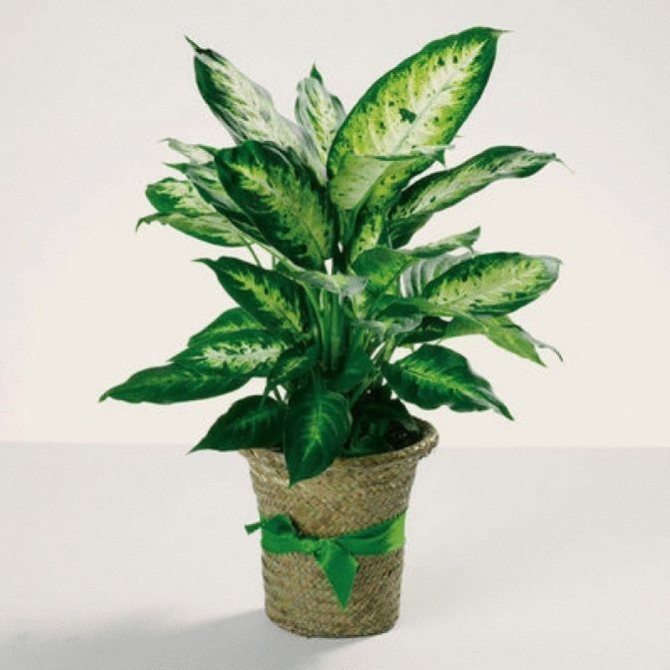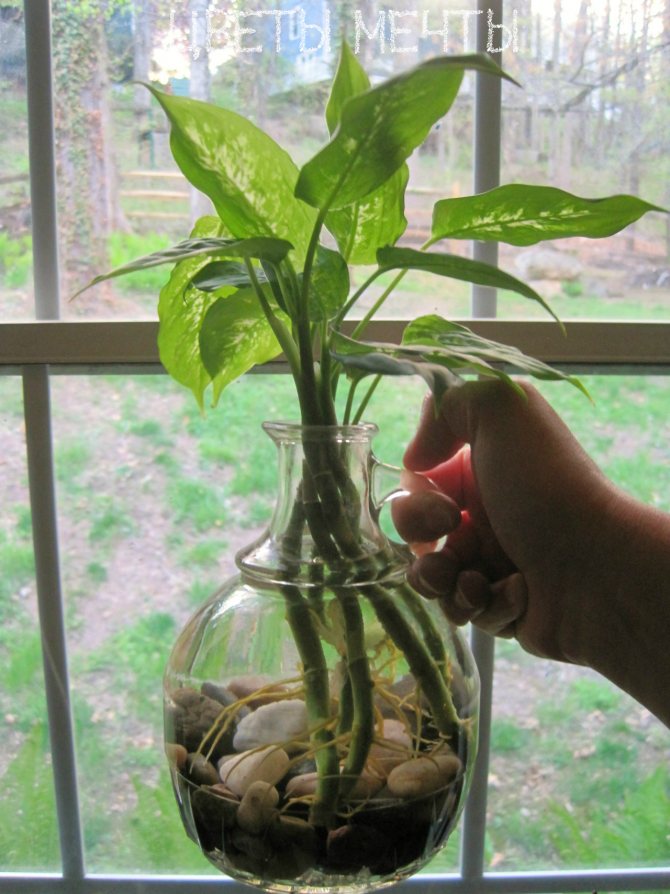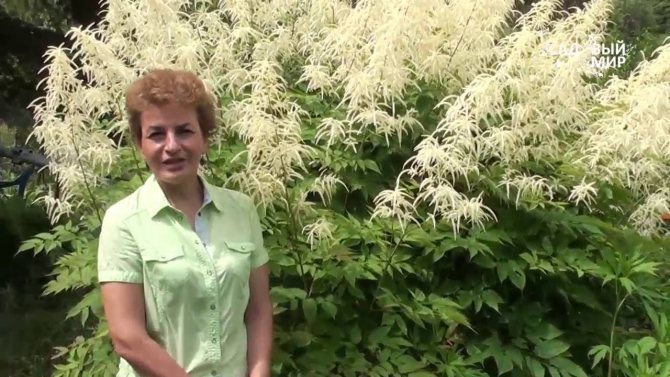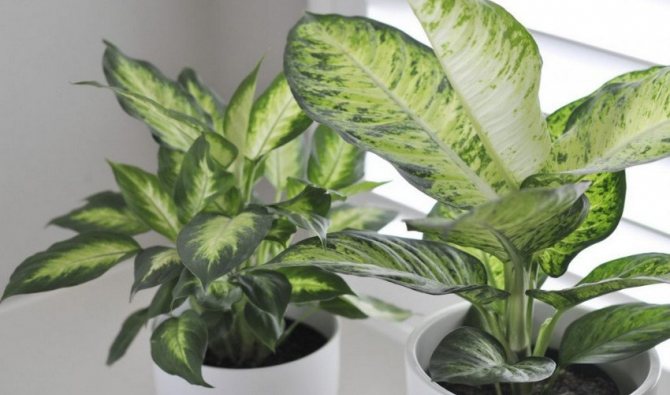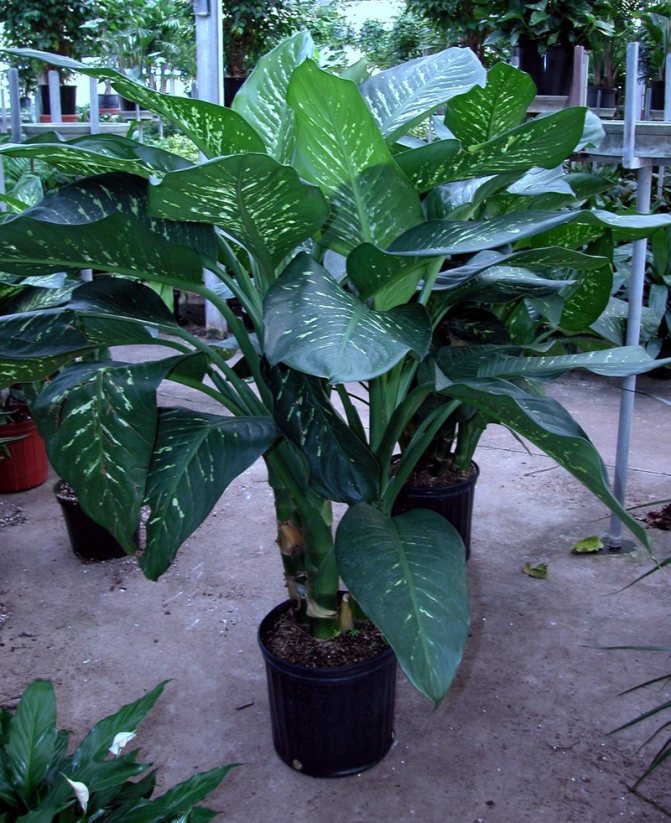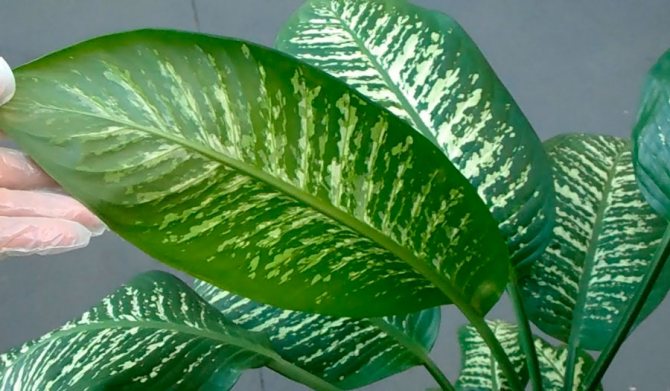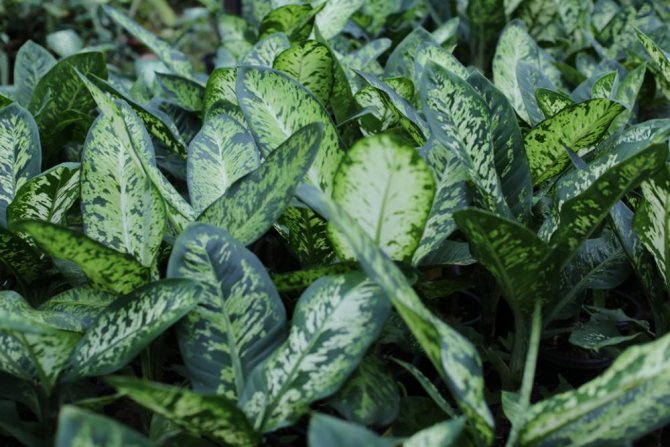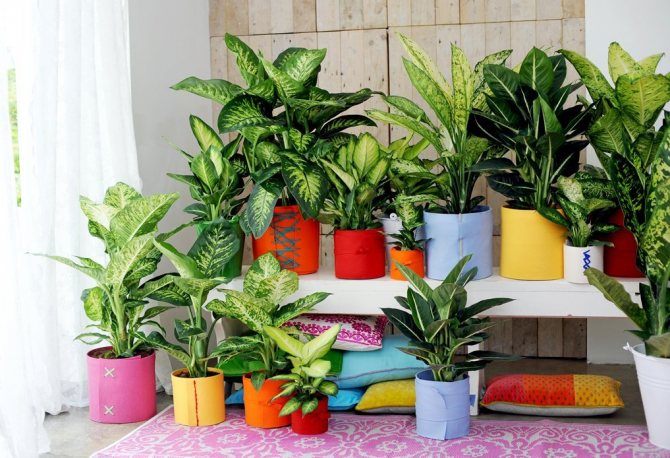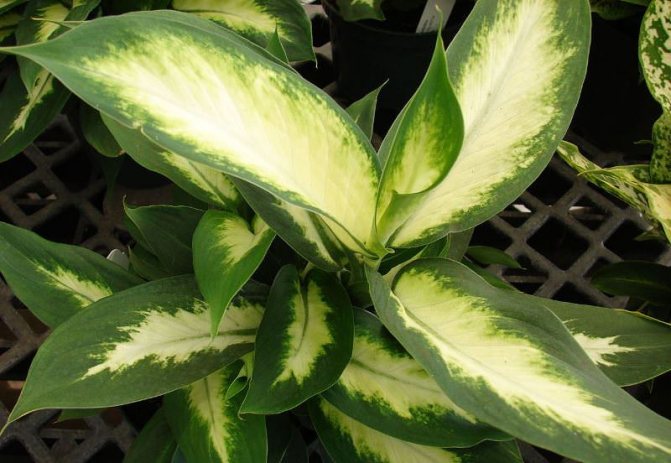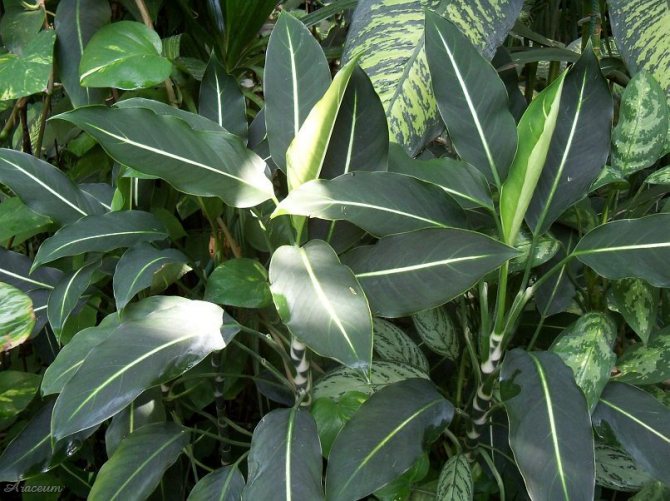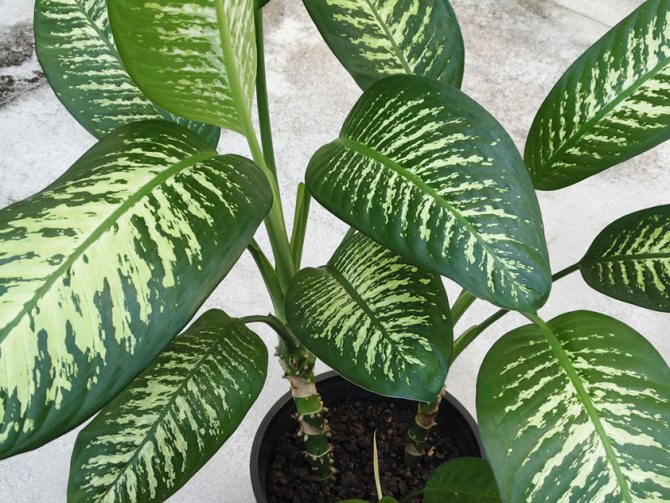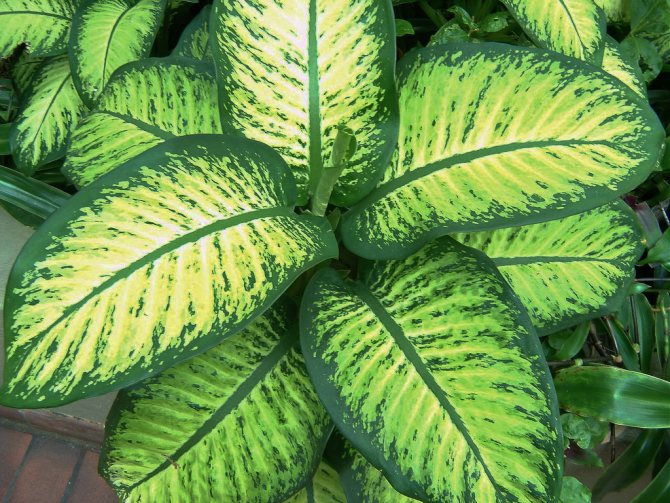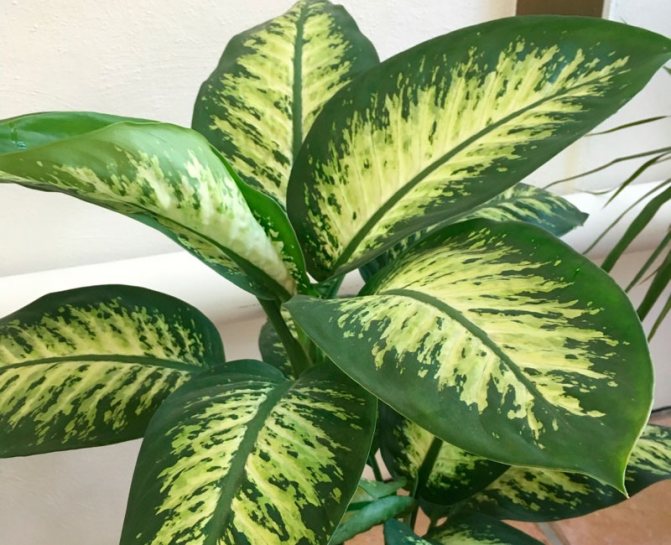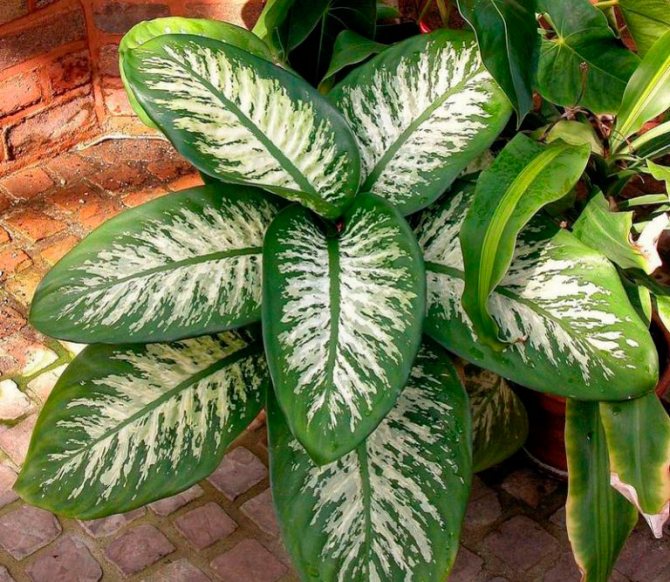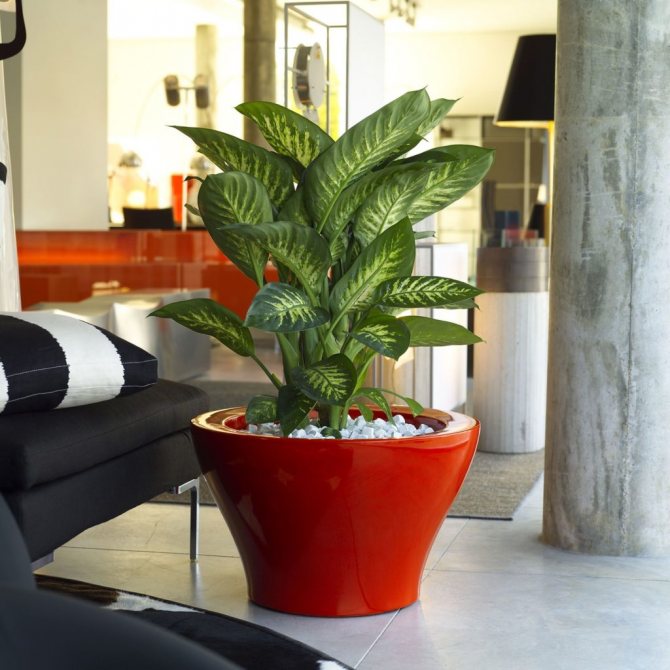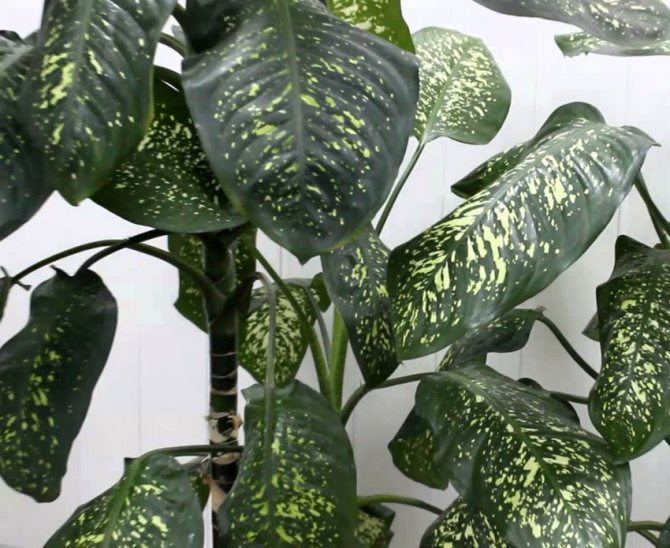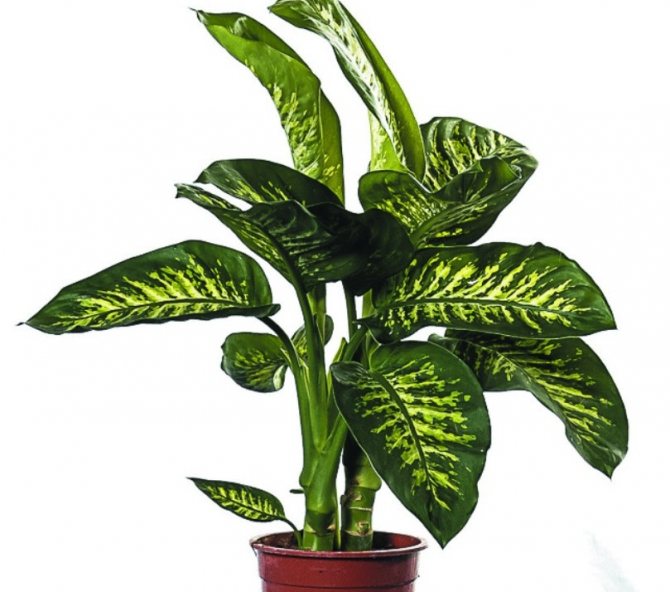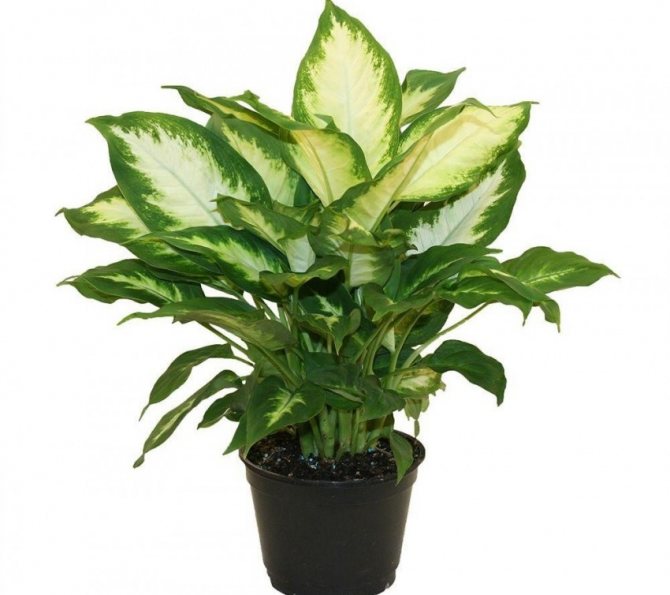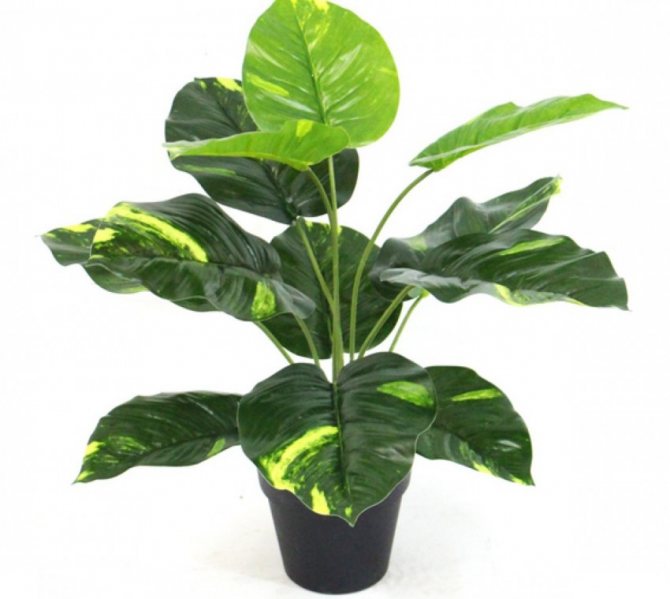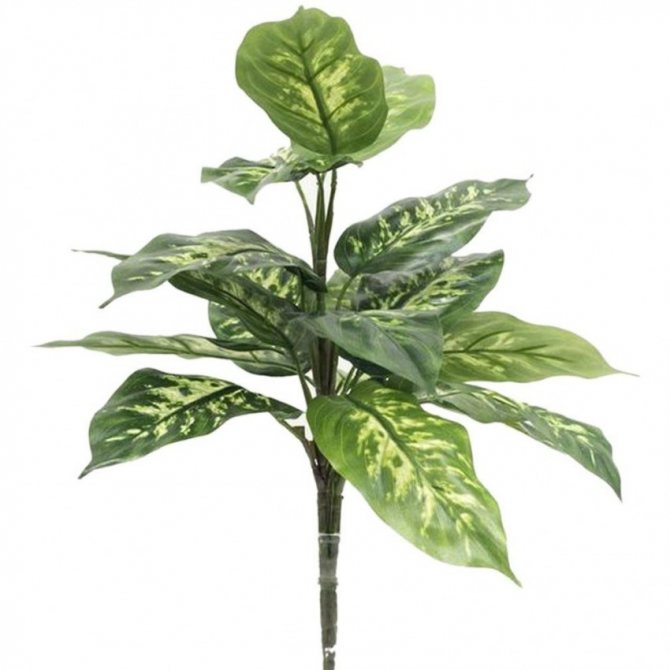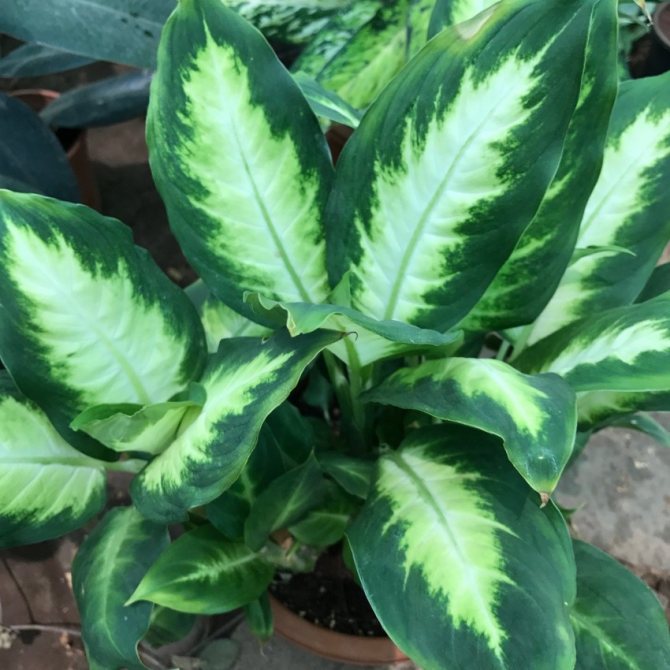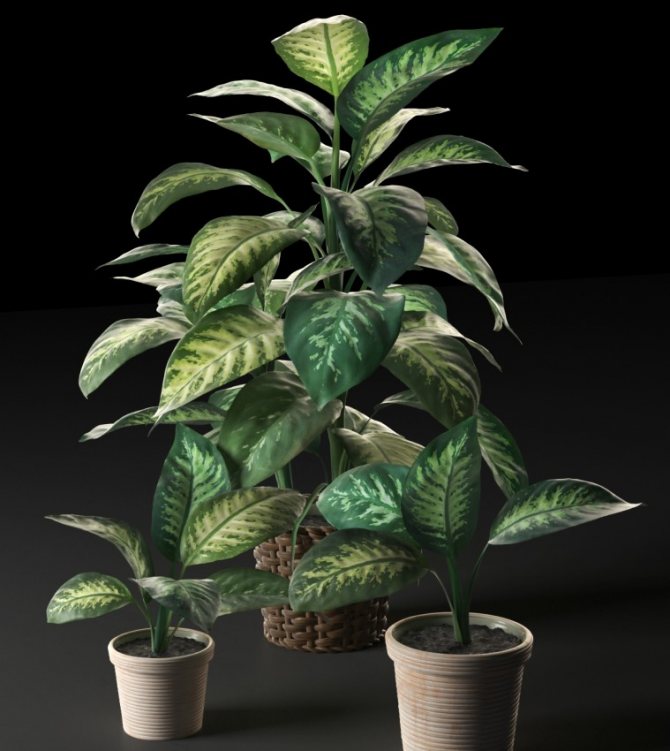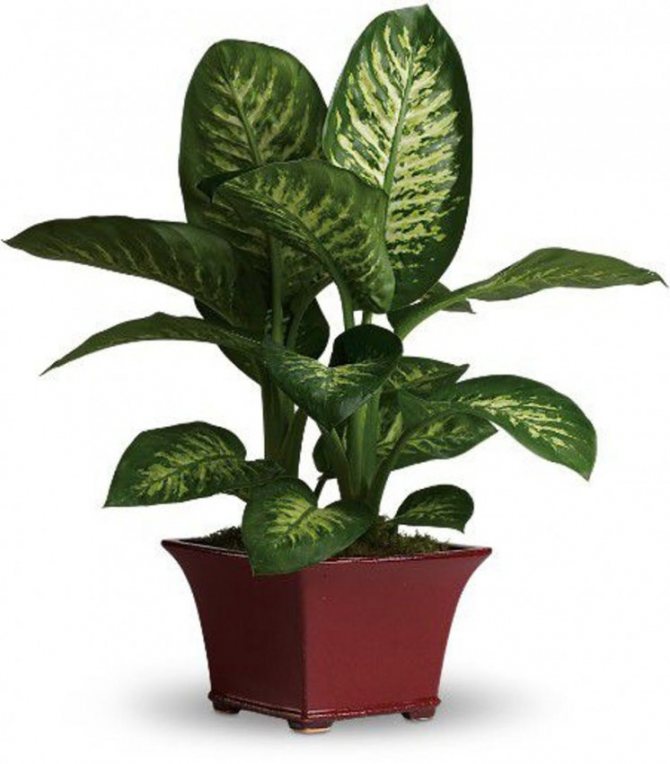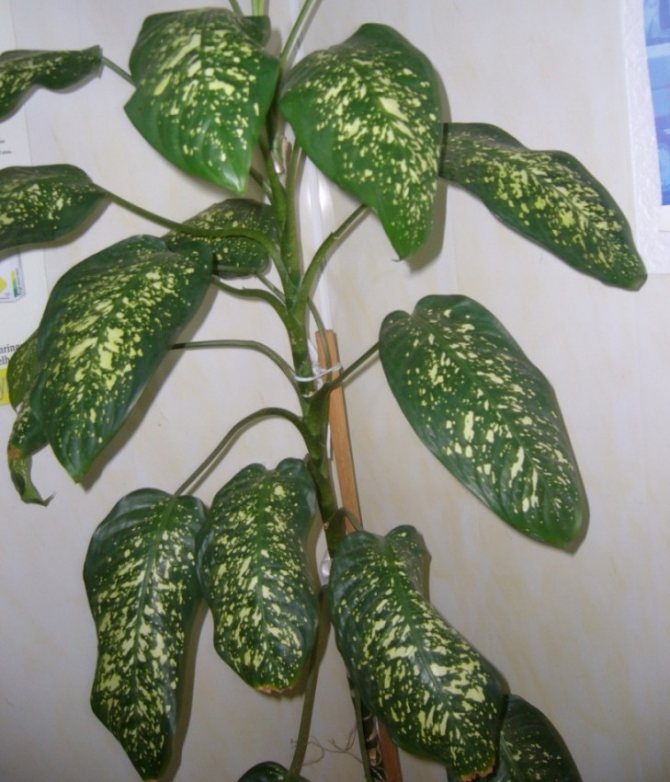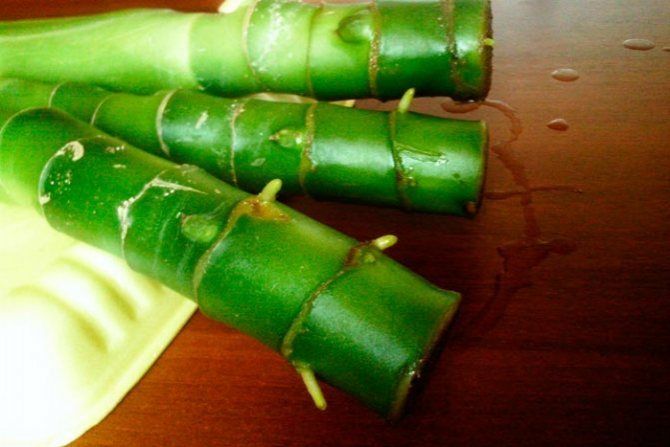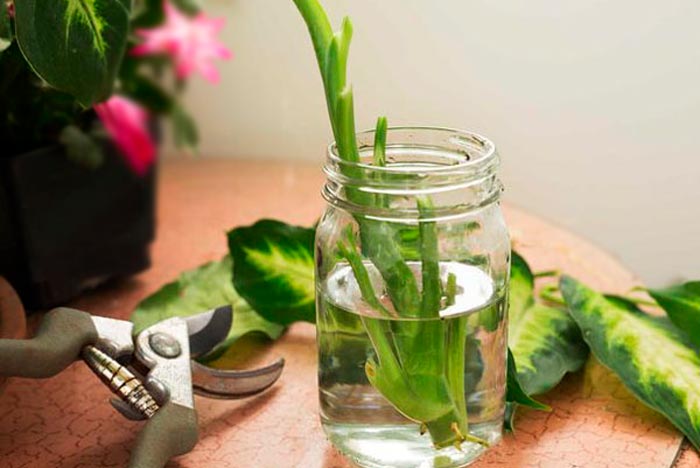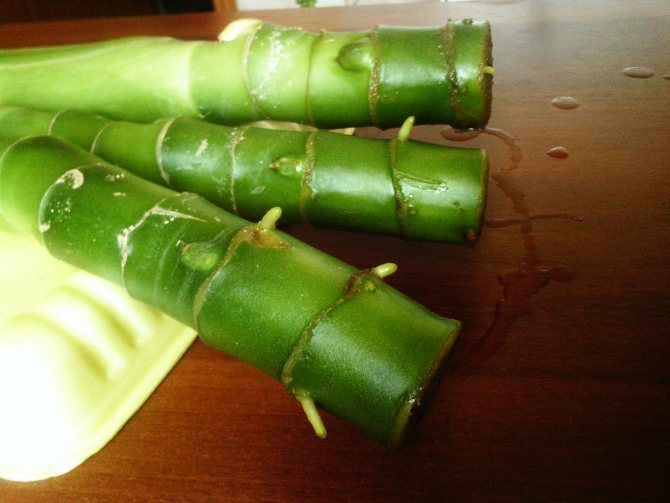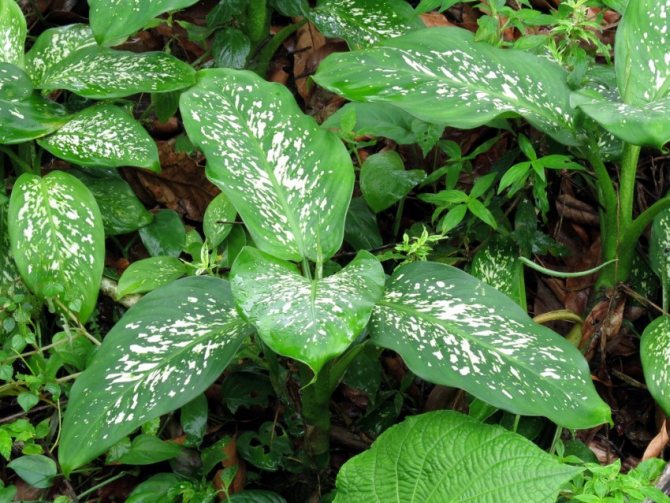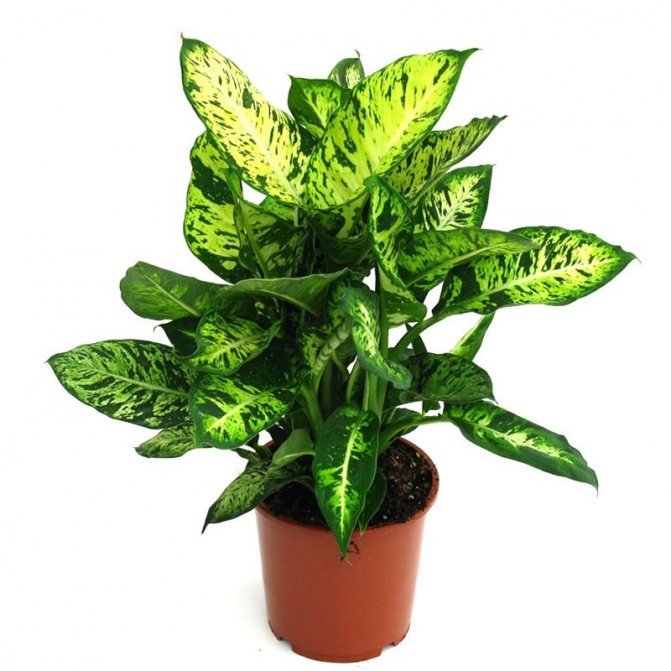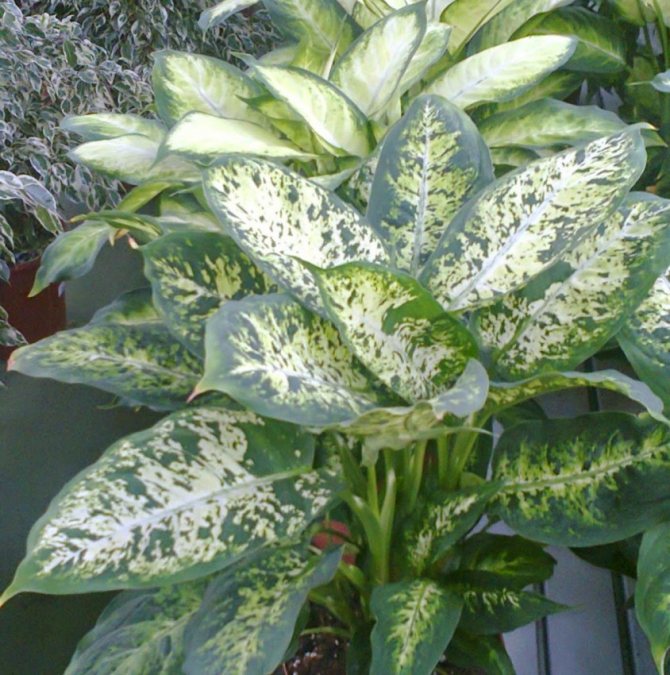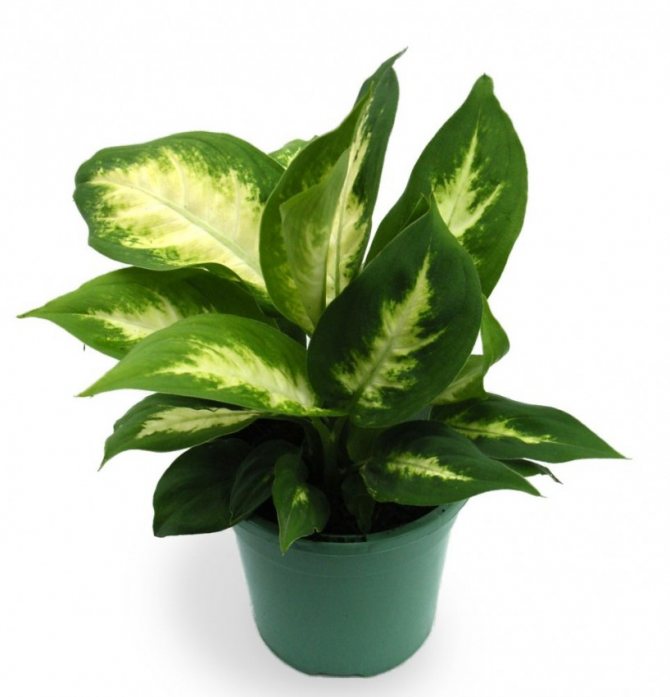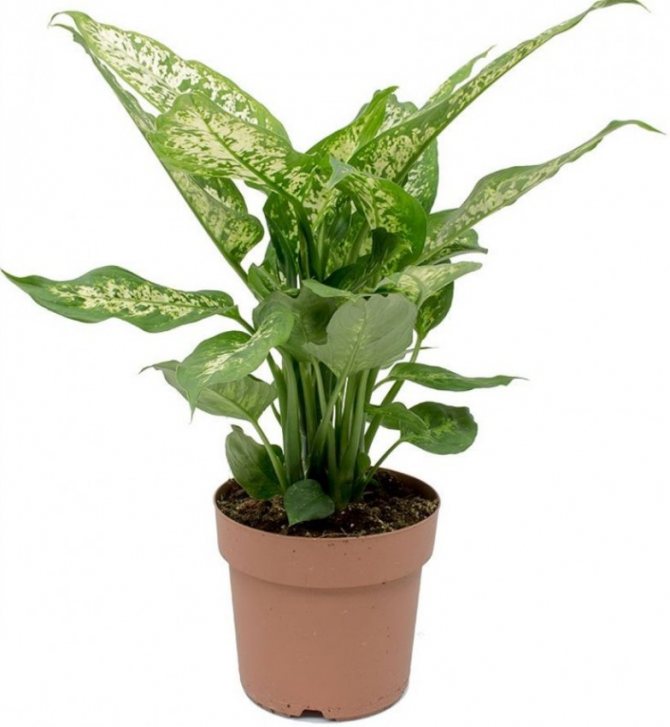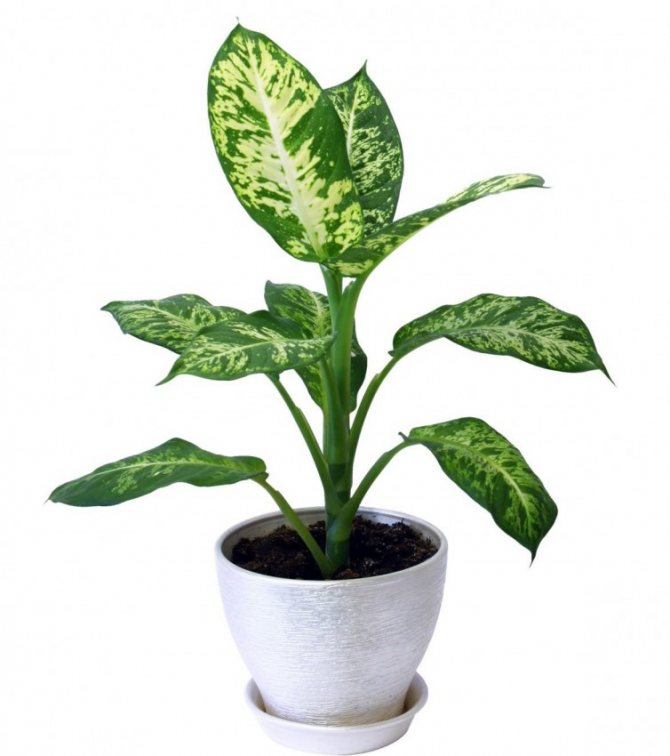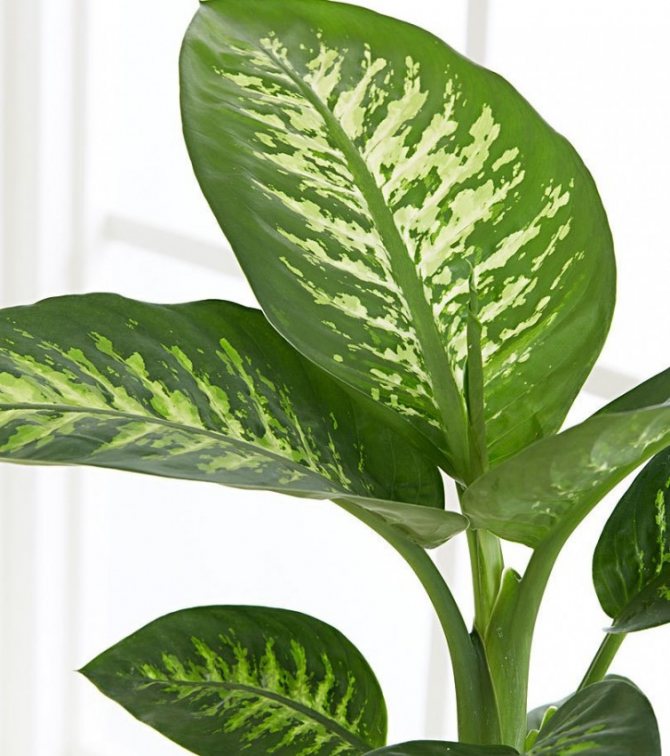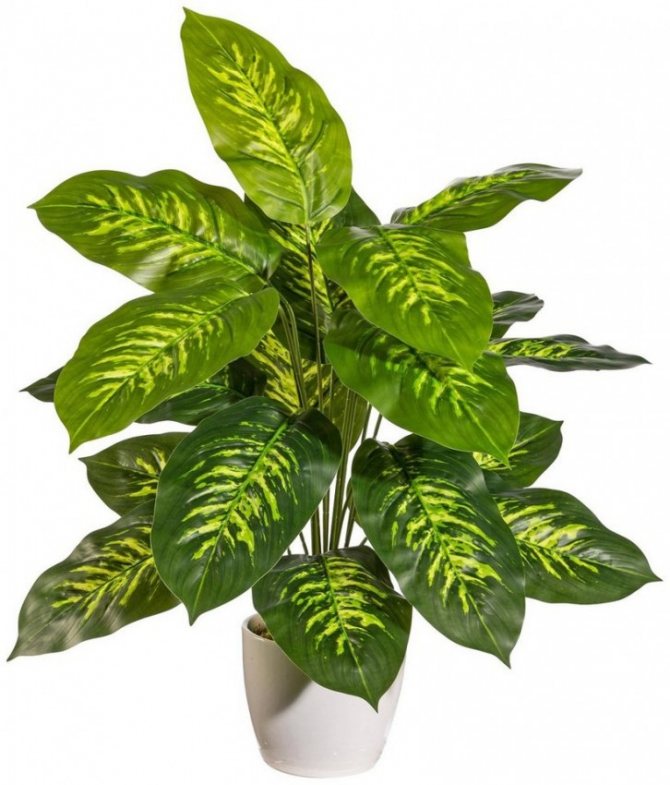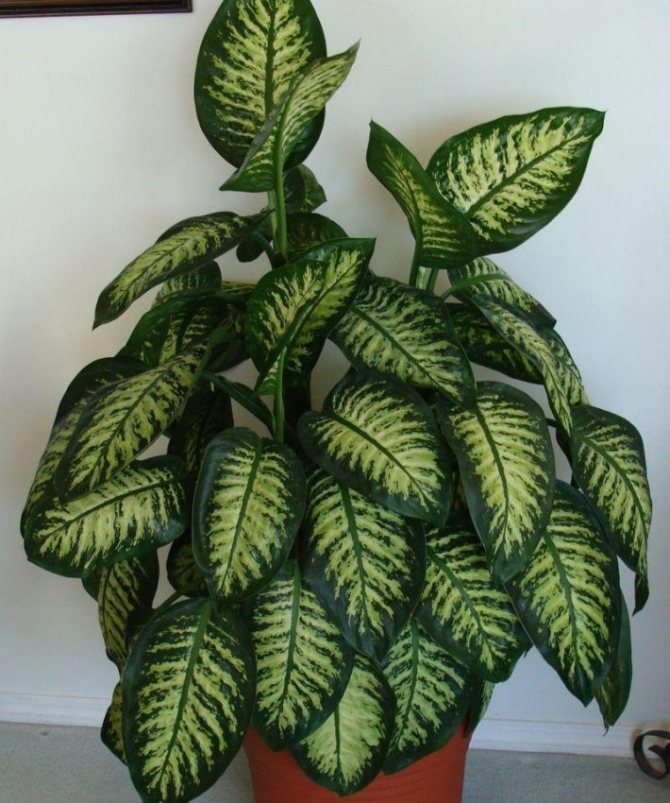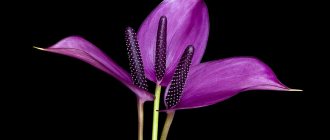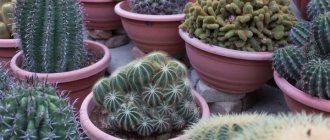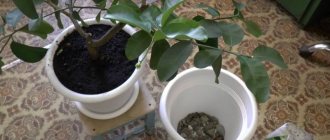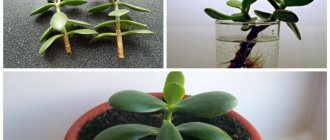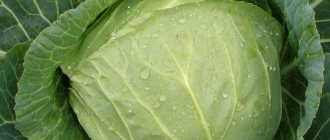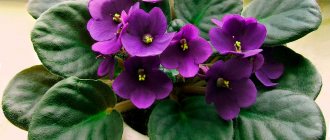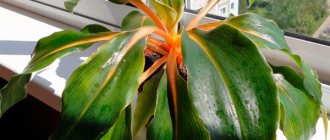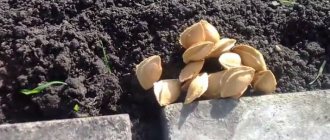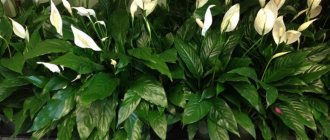They say family is a constant compromise. And it is true! For example, I really love flowers, and my husband and son love football. One day “my eldest” brought the ball, and they were so naughty with the little one that they scored the fatal goal of my favorite Dieffenbachia, knocking it off its old shelf and making it break in several places at once.
The husband immediately offered a compromise: "Let's go outside for a walk?" Only the pot didn't get any better from this ... It's good that I know well how to propagate dieffenbachia. So from one beautiful plant I got five at once - small, but also beautiful.
How is dieffenbachia propagated by cuttings
Spring and summer are most suitable for cuttings in any way. Since cuttings planted in the soil or placed in water in autumn and winter take a very long time to germinate. In this case, the tops can shed foliage, but if they have dormant buds, they will still give new shoots over time.
Dieffenbachia reproduce successfully and by pieces of the stem (after trimming the top), it is cut with a sharp disinfected knife into pieces up to fifteen centimeters long with one or better two buds. For rooting, the resulting stem cuttings are placed in a container with warm water, as shown in the photo.
It may take one to three weeks for roots to appear. Typically, the top and middle sections of the stem germinate faster than those taken from the bottom. After the roots have grown up enough, you can plant cuttings. To do this, you need to take peat and sand in equal quantities and fill the prepared containers with the mixture.
As you can see in the photo, after planting dieffenbachia in the ground, it is closed with glass jars or plastic bags to create greenhouse conditions.
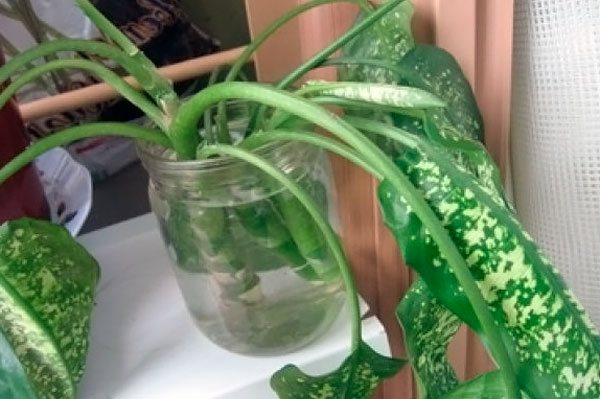
The resulting greenhouses are placed in a place with good lighting and a temperature of about twenty-five degrees. The shelter must be removed daily, and watering should be carried out as needed when the topsoil dries up.
After the first leaves appear on the cuttings (after about two months), they need to be transplanted into permanent pots, which should be spacious enough, since dieffenbachia grows very quickly. Also trunk sections can be immediately planted in the groundwithout keeping them in water until roots are formed.
Some lay them horizontally, then with successful germination, you can get several young plants at once, which are separated during subsequent transplantation. And if you plant them initially in a large container, you can leave them together and get an original composition from several plants.
You can also carry out rooting of the trimmed apical cuttings or lateral shoots, which give some types of dieffenbachia. They also need to be placed in water or immediately planted in soil and placed in a bright warm room, watering and spraying. The stump remaining after pruning in the soil, at least ten centimeters high, must be covered with a glass jar and watered regularly. After some time, new shoots will appear on it from dormant buds.
If the cuttings are placed in a container with water, you need to add a small amount of activated carbon to it to disinfect and avoid decay of the planting material.
What is needed for the procedure to be as effective as possible
First, the plant is best propagated in spring or early summer. This is a period of active growth of dieffenbachia. That is, the cuttings will themselves "help" you.
Secondly, if the stalk is small or you germinate it late (in the fall), it is better to root it under a greenhouse from a bag or an inverted jar.
Finally, always use the sharpest knife possible. If your instrument is dull, it will crush the stem of the plant. Such a stem will germinate much worse.
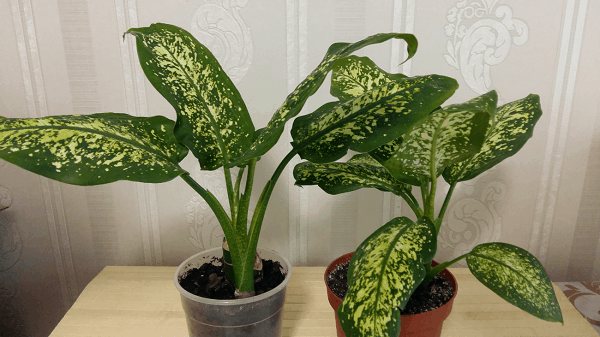

Plant care after transplant
- Soil for a rooted flowerpot: light, nutritious, slightly acidic. A good example: deciduous soil + sand + peat + some vermiculite.
- Choose a large pot. First, Dieffenbachia will grow rapidly. Secondly, the pot must be heavy so that the tall plant does not outweigh it. But at the same time it should not be quite a "bucket", otherwise dieffenbachia will grow only at the root.
- Drainage is a must when planting, even if dieffenbachia is still quite tiny. In addition to expanded clay, you can also add stone / coal chips to the drainage.
And how to care for a flowerpot when it grows up? An experienced video blogger, whose dieffenbachia has almost grown to the ceiling, but still impresses with its grooming, will tell:
How to propagate dieffenbachia by seeds
At home, the seed propagation method of dieffenbachia is used quite rarely, since it is very difficult to find its seeds on sale. But if you still want to conduct an experiment, you need to artificially pollinate its unisexual flowers (ears), on which there are stamens at the top, and a pistil at the bottom.
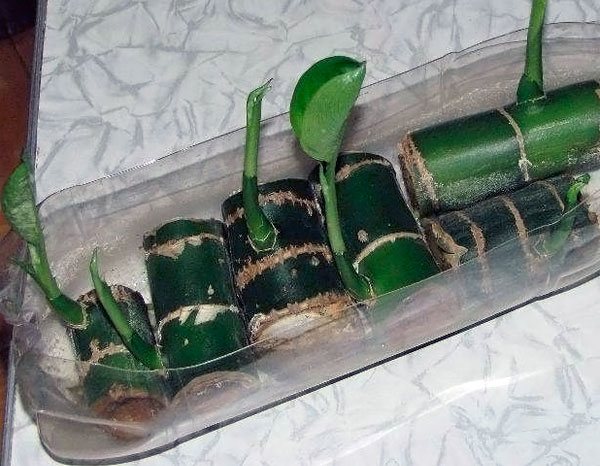

Thereafter the plant is covered with a plastic bag to ensure high humidity. The fruits ripen within five months, when ready they have an orange-red color.
The collected dieffenbachia seeds must be planted in a mixture of peat and sand in equal quantities, moistened with a spray bottle, and covered with polyethylene film. Landings are placed in a well-lit room with temperatures ranging from twenty to twenty-five degrees. After two or three leaves appear on the seedlings, they need to be planted in individual pots.
Possible breeding problems
Usually, cultivation of a crop is quick and easy, but if the basic agrotechnical recommendations are violated, difficulties arise.
Possible difficulties and their reasons:
- Roots do not appear for a long time - it is cold in the room, the mother plant did not receive enough nutrition.
- Blackening of the tips of the cuttings when rooting in water - decay has begun.
- The rooted crown sheds leaves due to drafts, low temperature in the room, improperly selected soil, lack of light and moisture.
- The edges and tips of young leaves dry at low soil and air humidity.
- The wilting of the trunk occurs with the systematic waterlogging of the substrate and the settlement of pests.
- Yellowing of the cuttings is possible due to prolonged exposure to the old liquid.
- The lack of sprouts in shoots rooted in the soil is due to an unsuitable microclimate, lack of watering and low air humidity.
Reproduction of dieffenbachia at home is possible in several ways. You should choose the right one depending on the available planting material, variety and condition of the plant, the desired result. In most cases, the procedure is successful, but it requires the creation of favorable conditions and compliance with agrotechnical recommendations.
What soil is required for the propagation of dieffenbachia
Dieffenbachia loves light and nutritious soils, since with insufficient oxygen supply to the root system, it quickly decays. For planting, you can purchase a ready-made universal mixture and add a small amount of vermiculite to it.
When preparing soil for dieffenbachia yourself you can use the following formulations:
- Sod land - 2 parts, peat land - 4 parts, coarse sand - 1 part;
- Sod land - 2 parts, sheet soil - 1 part, peat land - 1 part, peregeoi - 1 part, coarse sand or perlite - 1 part;
- Sheet soil - 4 parts, sphagnum moss - 2 parts, peat - 2 parts, coarse sand - 1 part, charcoal - 1 part.
When to propagate Dieffenbachia?
Cutting and rooting of young plants is best done in the spring, when the active growing season begins. However, Dieffenbachia is completely non-capricious and takes root quite well at any other time of the year, especially with the use of root formation stimulants.
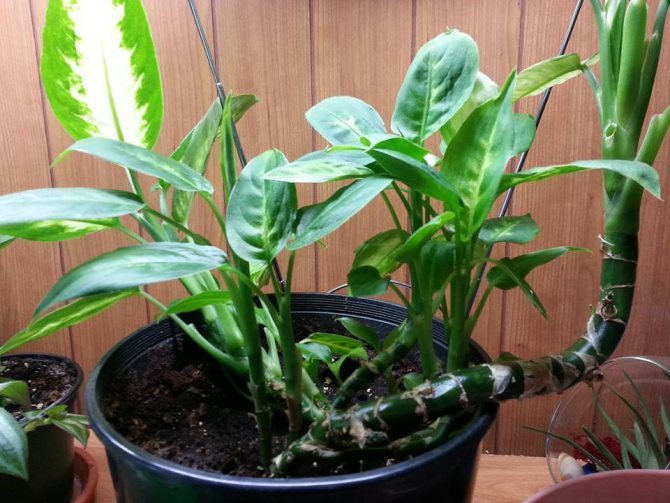

The twisted and bare dieffenbachia trunk (right) needs rejuvenation through cuttings
Reproduction by part of the root
When transplanting dieffenbachia, another method of reproduction is used - by dividing the roots. It allows you to get one or two new plants from a single flower.
How to plant dieffenbachia:
- Remove the flower from the pot without destroying the clod of earth.
- Rinse the roots with water, detangling gently so as not to damage. This allows you to spot diseases and remove damaged parts of the plant.
- Divide the roots into 2-3 parts.
- Leave in the air for a day to dry.
- Plant in prepared pots with soil.
Dieffenbachia pests and diseases
Insects and Dieffenbachia Diseases
Of the insects, dieffenbachia is most often affected by spider mites, scale insects, aphids, thrips and mealybugs. Methods of dealing with them consist in the mechanical removal of pests with a damp sponge soaked in soapy water, followed by washing off the soap with plenty of water. In case of severe infection, treatment with a solution of actellik or karbofos is used in a proportion of 15 drops per liter of water.
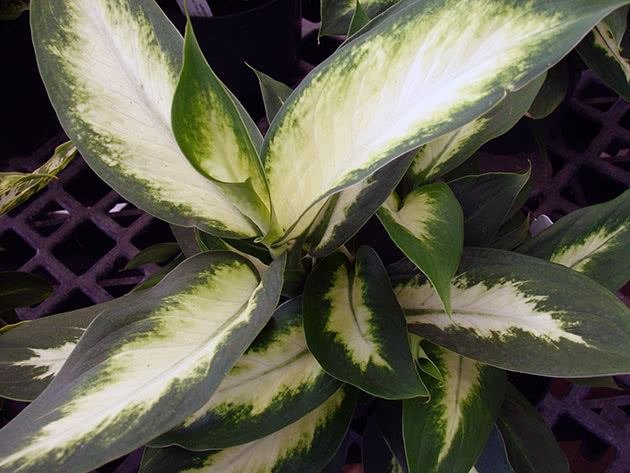

Sometimes dieffenbachia suffers from bacteriosis, which manifests itself in the appearance of watery areas with clear boundaries on the leaves. Unfortunately, this disease is bacterial in nature, it is incurable. An adult plant can also be destroyed by root rot, which rot firstly affects the underground part of the plant, and then the ground one. As soon as you notice areas with a light gray bloom, take action immediately: reduce watering, replace the substrate, treat with a systemic fungicide.
Dieffenbachia turns yellow
Very often, amateur flower growers ask the question why the leaves of Dieffenbachia turn yellow. To begin with, if you followed all the rules for caring for the plant, you would not have to find out why Dieffenbachia turns yellow, since proper care makes the plant invulnerable to diseases and pests. But in life, anything happens, so let's clarify this issue.
First of all, in such cases, the suspicion falls on a violation of the temperature regime: either it is too cold in the room, or the plant was standing in a draft. A possible reason is also watering the plant with too hard water or a lack of nutrients in the soil. Dieffenbachia leaves turn yellow due to root rot.
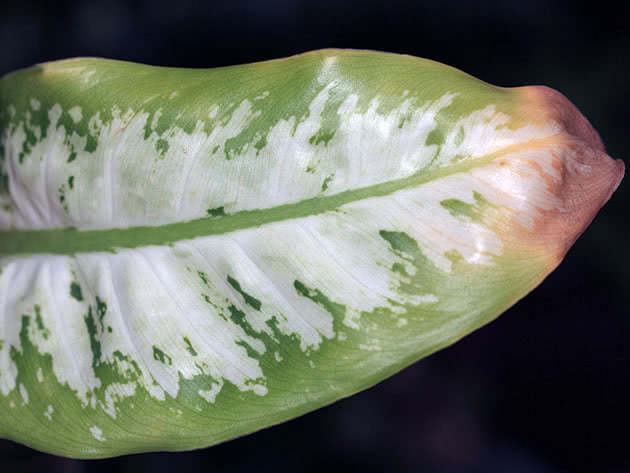

Dieffenbachia dries
Often our readers also ask why dieffenbachia dries. If the lower leaves dry, turn yellow and fall off, then this is a natural process, which, unfortunately, cannot be prevented, and if the trunk is very bare, then it is time to rejuvenate Dieffenbachia by cuttings. But if young leaves dry, then this is most likely due to insufficient watering for a long time, cold air or drafts.
Dieffenbachia withers
If the leaves are drooping and the substrate is dry, then you rarely water the plant, but if the substrate is wet and the leaves are drooping, check the roots for rot. If it is found, clean the roots of the soil, remove the rotten areas with a sharp, sterile instrument, treat the wounds with crushed charcoal or ground cinnamon and transplant the dieffenbachia into new soil.We will have to revise the mode of plant moisture in the direction of reducing the amount of moisture or the frequency of watering.
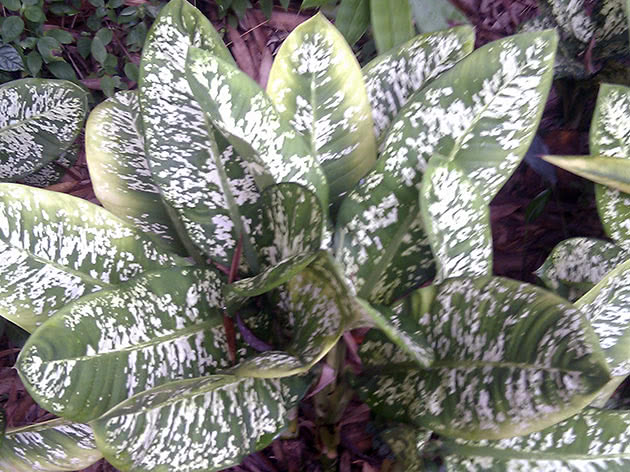

Less popular breeding methods
Despite the fact that the process of cuttings dieffenbachia is very quick and easy enough, there are other possibilities to reproduce a house ornamental plant. Along with ficuses, dieffenbachia can also multiply using air layers.
For this purpose, it is required to make an incision on the stem part, which should be lined with well-moistened moss. On top of the moss, it is necessary to wrap with dark polyethylene, which must be tightly fixed with adhesive tape, electrical tape or thread slightly above and below the cut area. After the roots are formed under the film cover, the stem part with the roots and the film must be cut off, the winding removed and planted in a nutritious soil substrate.
Benefit and harm
The sap of the plant is poisonous and can cause irritation if it comes into contact with exposed skin. In case of accidental contact with mucous membranes, the glands and tongue swell.
All work with the flower (transplanting, pruning, etc.) is best done with thick rubber gloves, and upon completion, wash your hands well with soap and water. You should not keep it in the children's room, as well as in a place where the child can reach.
At the same time, adorable dieffenbachia cleans the air of many harmful substances: xylene, benzene, various formaldehydes.
They also clean the air well: Anthurium, Ficus Benjamin Kinki, Peperomia blunt-leaved, Hoya Karnosa, Decorative leafy Begonia, Fragrant Dracaena, Dieffenbachia Spotted and some others.
Young plant care
In the first year of life, dieffenbachia should be grown on western or eastern windows, where it is possible to provide the decorative indoor plant with an optimal lighting regime, as well as the correct temperature and humidity level. Regular watering is required as needed, at the stage of sufficient drying of the soil in a flower pot. It is also very important to spray the aerial part of the plant with water at room temperature from a household spray bottle.
Types and varieties of dieffenbachia
The most common species in culture are Dieffenbachia maculata and Dieffenbachia variegated, or painted (Dieffenbachia picta) - plants with a large succulent stem and elongated oval leaf plates with obvious venation, reaching 12 cm in width and up to half a meter in length. Their bright green leaves are dotted with white spots and stripes. They differ from each other in that variegated dieffenbachia grows up to two meters in height, and spotted dieffenbachia does not exceed a meter, but its leaves are slightly larger in size and they are more pointed at the top. It was the spotted dieffenbachia that became the basis for most of the varieties and hybrids bred by breeders. Here are some of the most popular varieties of Dieffenbachia spotted in the culture:
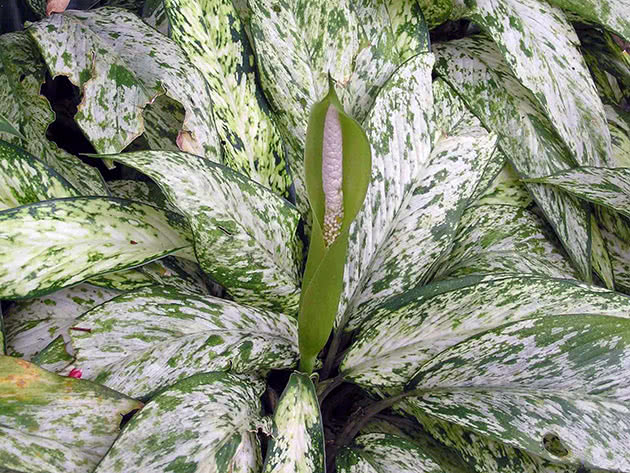

- variety "Vesuvio" - a graceful medium-sized plant with narrow, delicate white leaves and green specks on white petioles;
- Dieffenbachia "Camilla" is one of the most hardy bushy varieties, which is why it has earned popularity among amateurs. Lanceolate creamy white leaves are surrounded by a light green rim. Young leaves are greenish;
- Dieffenbachia "Compact" is a neat dense bush with green leaves with light specks along the central vein.
Dieffenbachia leopoldii
A low-growing plant native to Costa Rica with a short and thick stem, pale green short petioles with purple spots and dark green elliptical leaves up to 35 cm long with a pronounced white central vein.
Dieffenbachia adorable, or pleasant (Dieffenbachia amoena)
Lovers of flowers like it for its unpretentiousness and excellent adaptability to home conditions, since it tolerates dry air and the proximity of heating devices better than other species. In addition, its decorative qualities are beyond any criticism: height up to one and a half meters, large dark green oval leaves up to 60 cm long with white stripes along all the veins.
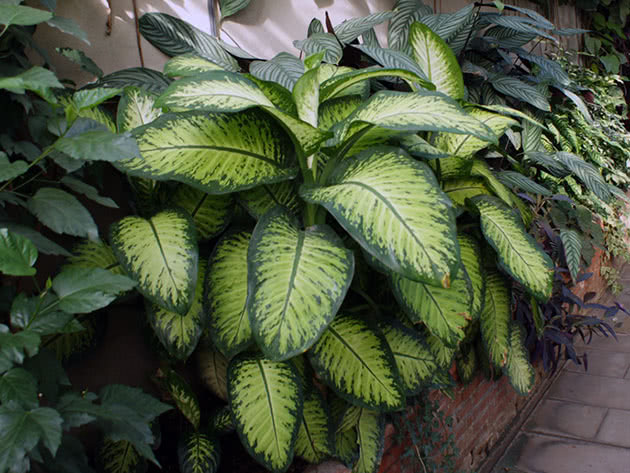

Dieffenbachia seguina
Which amateurs often confuse with spotted dieffenbachia, has wider - up to 16 cm - leaves with fewer lateral veins than that of spotted dieffenbachia. This species also gave many varieties and hybrids, for example, "Tropic Snow" - never out of fashion cultivar with the correct pattern on the leaves formed by yellow spots, while the central vein and edges of the leaves remain dark green.
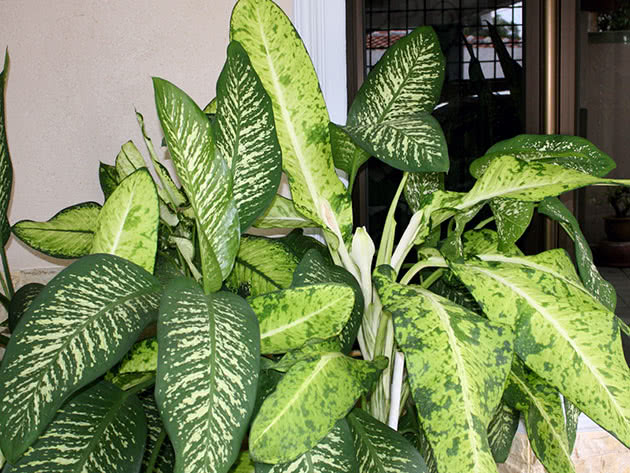

Dieffenbachia oerstedii
View with monochromatic green leaves of a cordate or pointed shape with a distinct light central vein. The leaves are 30-35 cm long. The most famous hybrid of this species is "Green Magic", a dense small bush with unusual color leaves: they are dark bluish-green with a white central vein. There is a form with small light specks along the leaf blade.
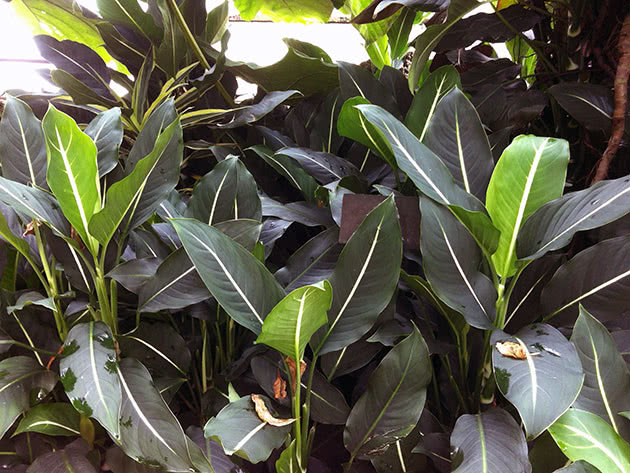

Dieffenbachia magnifica
The appearance is light green with white dots along the leaves and petioles.
- Seed propagation
Dieffenbachia macrophylla
The only species with monochromatic green leaves and veins, the shape of the leaf plate is ovoid, the median vein is thickened. This species grows in height up to one meter.
Dieffenbachia bowmannii
The species with the largest leaves among dieffenbachia up to 70 cm long is dark green in color with small light specks.
Dieffenbachia bausei
It has yellowish-green leaves up to 35 cm long with a marble pattern of dark green and white spots.
Lighting
The flower needs to receive sunlight, but direct sunlight will oppress it. Experienced flower growers recommend in no case to place dieffenbachia on a window or balcony that faces south.
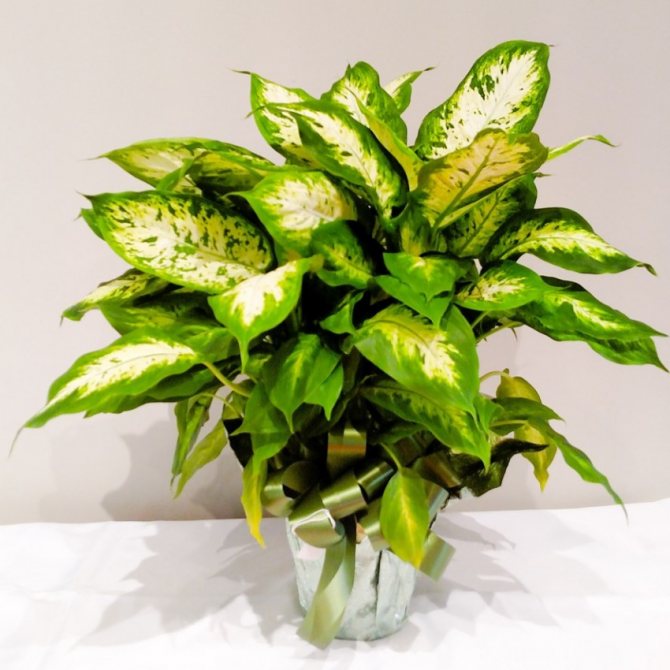

If the plant lacks sunlight, it stretches very quickly, becomes thinner and becomes very fragile. The number of leaves also decreases.
Preparing for breeding
For growing dieffenbachia, clay pots are best suited to the size of the plant's root system. Selected "for growth" are not suitable, it is fraught with decay of the roots. As the flower grows, it is better to transplant it again into a larger container.
Important! Experts consider modern plastic pots uncomfortable for dieffenbachia, since the absence of pores in plastic makes it difficult for air exchange in the root system, and
soil moisturenot regulated.
A drainage layer in the form of crushed bricks and charcoal should be laid at the bottom of the flowerpot. Properly selected soil plays a special role in the process of plant propagation.
The best substrate is peat in a mixture with vermiculite (perlite), combined in equal proportions. High-quality soil is also obtained from sphagnum, peat soil and perlite (vermiculite), where half of the volume is sphagnum, and the rest is presented in equal proportions.
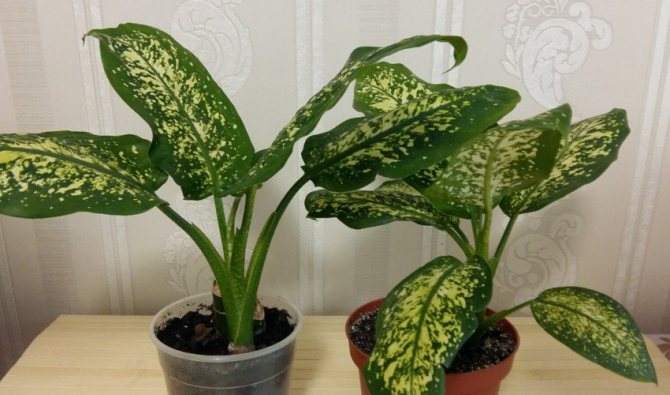

In order to prevent rotting of the root system, it is recommended to enrich the prepared soil with activated carbon (in a proportion of 1 tablet per 0.5 l of substrate).

